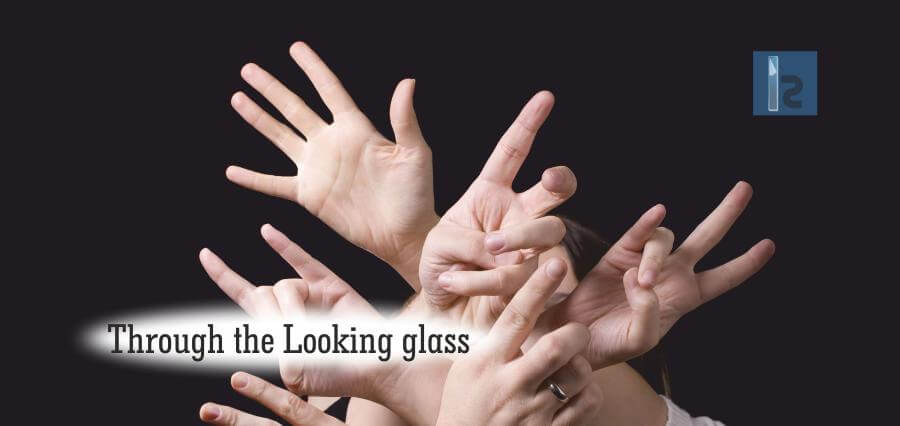There is a form of communication that transcends the power of words. –Joseph B. Wirthlin, Businessman, Religious Leader
Apart from air, water, food and shelter, one thing that living beings need is perhaps the need to communicate. All living beings communicate, irrespective of their species, creed, gender, habitat, nationality, shape, size and other such myriad criteria. And there are many ways to do so. Words, sounds, expressions, gestures, even looks and touch are all understood as means of communication. Speech or voice is the most preferred way to express for human beings. The power of speech and words has long been commended. We are so used to speaking that sometimes we take this power of ours for granted. At times, we just tend to forget how blessed we are to have our voices help us emote until we meet someone who can’t.
The Silent Population
Speech and language impairment in an individual can develop due to congenital conditions like cerebral palsy, autism, defective auditory system, and acquired conditions like motor neuron disease, accident and trauma. Whatever be the reason, such people feel left out in society. It is difficult for them to make people understand them, study, have a job or to have a generally good and quality life due to lack of the power to communicate.
To communicate with people who lack speech, sign language is the earliest known method. All communication method which assists by supplementing or replacing such speech and writing for people with an impairment are studied, researched and developed under the umbrella term Augmentative and Alternative Communication (AAC). With the help of technology, the world has come a long way in assisting differently-abled people starting from sign language, graphic symbol communication, microcomputers, speech synthesis, to devices with speech output.
The AAC System
The AAC system is broadly categorized into two – unaided systems and aided systems. Unaided Systems use no equipment or external tool and include sign and body language. Aided Systems use an external tool or equipment. It includes pen, paper, pictures and others as a low-level or basic aided system and computer screens, speech generating devices and more like a high tech-aided system.
While sign and body language top the chart when it comes to informal communication restricted to family and close friends, Assistive Devices are used for formal and aided communication. These assistive devices help a person to hear and understand more clearly or to express thoughts more easily. These devices include and are broadly classified as follows.
Assistive Listening Devices help amplify a sound and are used with hearing aids and cochlear implants.
AAC Devices help communicate in various forms and range from pictures to text-to-speech conversion devices.
Alerting Devices are mostly wearable and emit light or sound to notify the wearer about an event.
Devising a Way to Communicate
The type of AAC device to be used by a differently abled person depends on the degree of disability, knowledge, kind of interaction and other factors. The devices generally fall into one of three categories:
Symbol or single meaning picture based, where a picture means a word and are simple. Alphabet based which use text, spellings and letters and require alphabetical know-how. Semantic or multi-meaning icon based where multiple symbols are used to convey messages.
A picture based device has many pictures which convey a message. For example, a picture of food can be selected by the user to say that he or she is hungry. A text-to-speech device is able to voice out the user’s thoughts when the input is given as a text. There are devices which capture the eye’s motion over a keyboard to type, display or voice the message that the user wants to convey. Yet another device has been developed which captures the American Sign Language and converts it into text for communication. A bracelet worn by user tickles them or lights up when the doorbell rings or there is a fire alarm and other situation to notify the wearer. Developers are trying to make wearable gloves and other accessories that can capture sign language and convert them into speech.
Reviving Life
The basic idea behind developing such systems is to bring the differently abled into the mainstream. To be able to communicate is almost a right for a human being and the denial, whether natural or accidental, leads to many psychological and social problems. AAC helps in multiple ways.
Better Speech – When a baby starts babbling, the first thing that a mother does is start talking to the child more than ever. That is the best way to teach them to talk. Research suggests that the use of AAC has a similar impact on differently abled individuals. The more comfortable they get with their AAC devices, the more they start talking or communicating with others.
Education – With the use of AAC devices, young and old alike have a chance to earn their education in normal schools and not get burdened with finding a special school that caters to them. This is the first crucial step in bringing them mainstream.
Employment – Employment follows education. With better education opportunities, people are employable and get better, if not equal, options.
Better Life – AAC devices let one lead a better and independent life. Physicist Stephen Hawking was perhaps the most famous example of how AAC can equip people with ideas that can be shared to revolutionize the world and let one live life on their own terms.
The future of AAC lies in improving the devices with respect to interfaces, improved designs, ease of use, economical and effecting social interactions. It also needs to capitalize on the advances in smartphone technologies to grow its reach. Science and technology aim at simplifying lives and they can’t serve this purpose completely until and unless they reach everyone. This world will be truly opinionated when everyone gets a chance to speak- even those who cannot!


